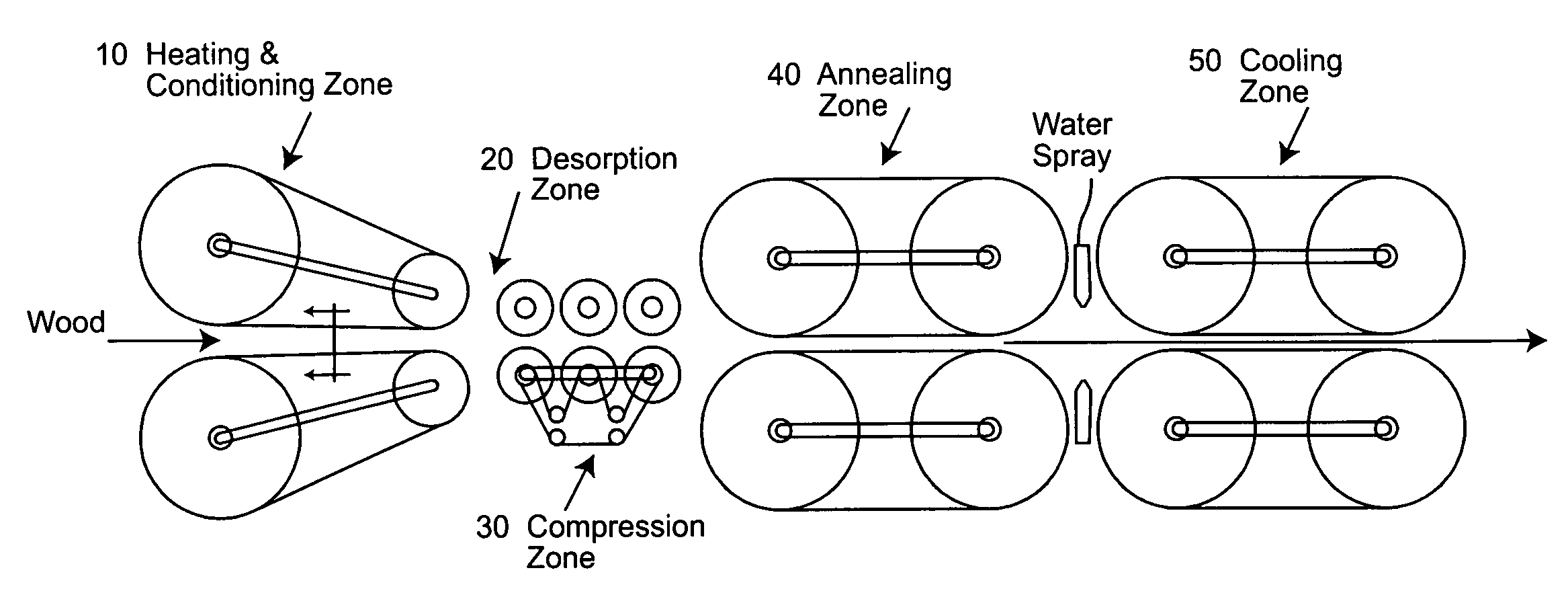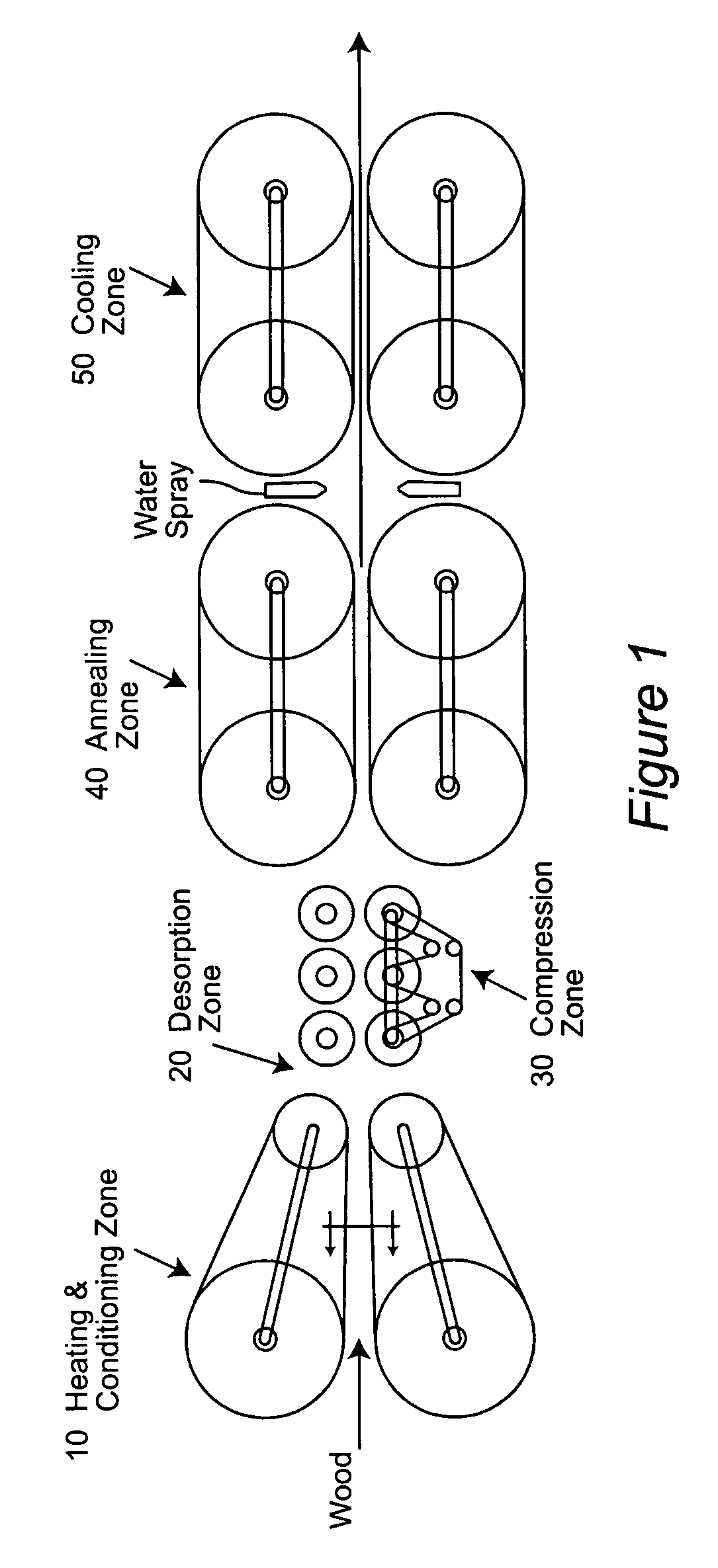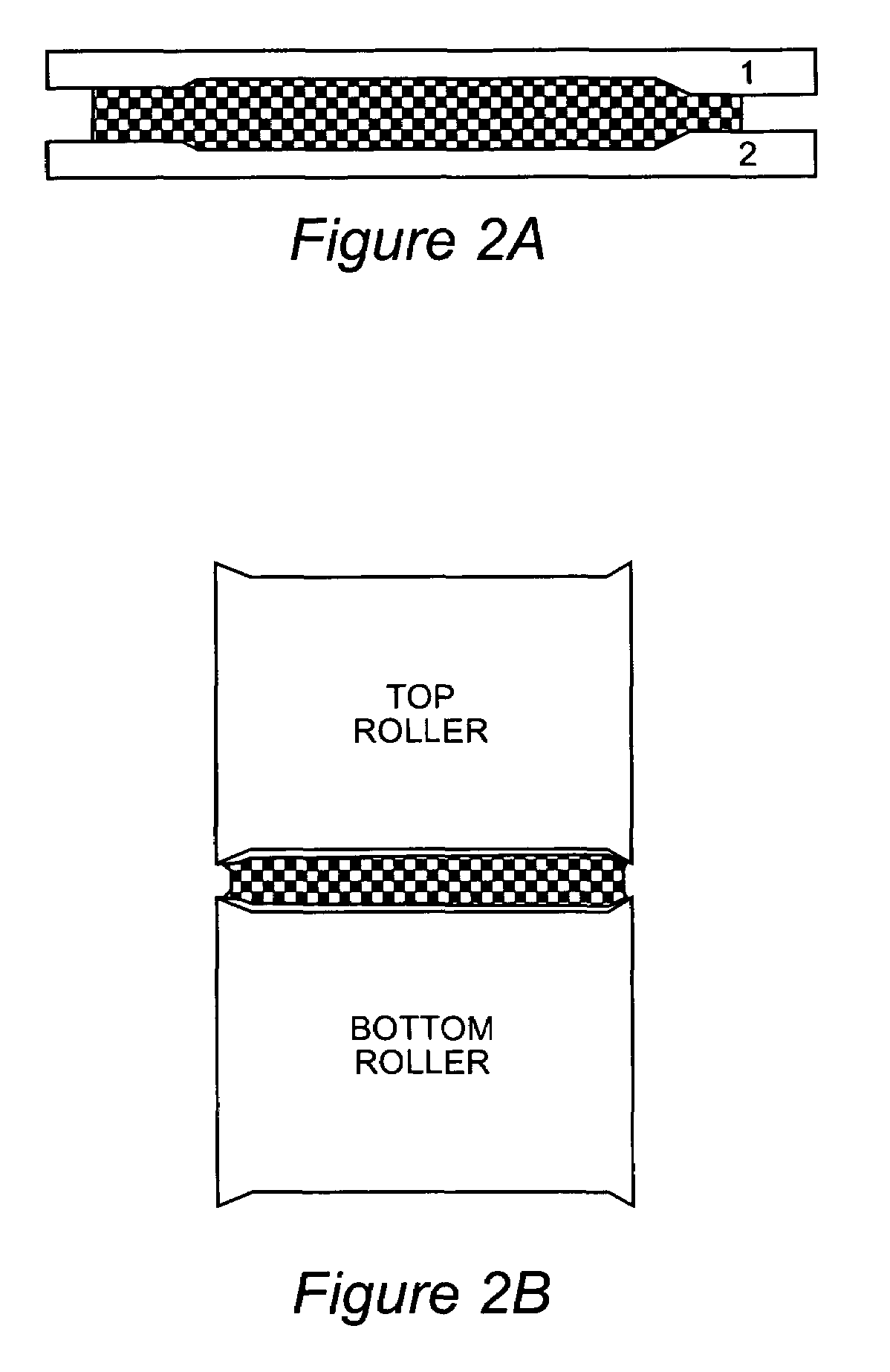Viscoelastic thermal compression of wood
a thermal compression and viscoelastic technology, applied in the direction of wood compression, wood heating, wood treatment details, etc., can solve the problems of low percentage of available wood, inability to meet the demand for certain types of wood products, and low density of available wood, so as to achieve high density, high strength and stiffness, and strength and dimensional stability. high
- Summary
- Abstract
- Description
- Claims
- Application Information
AI Technical Summary
Benefits of technology
Problems solved by technology
Method used
Image
Examples
example 1
Treatment of Yellow-poplar Veneer with the VTC Process
[0060]Yellow-poplar (Liriodendron tulipifera) veneer, 8.4 mm thick, with a moisture content of 10% and a specific gravity of 0.42, was treated with the VTC process. With the addition of water, the heating and conditioning phase was set at 170° C. and 772 kPa steam pressure. At this pressurized condition the wood quickly adsorbed moisture to approximately 20%. Compression pressure was ramped up to 4000 kPa and held for 180 seconds. Rapid decompression to 100 kPa followed, which coincided with the release of the compaction pressure. The wood rapidly lost moisture over a 10 second interval, and was continuing to loose moisture, when the compaction pressure was again applied, to a level as needed, until a thickness of 1.8 mm was achieved. The compression was held for 3 minutes at 170° C. A cooling phase followed, at a compaction pressure of 4000 kPa, until the temperature of the specimen dropped below 50° C. The final thickness was 1...
example 2
Treatment of Oriented Strand Composite with the VTC Process
[0061]An oriented strand composite, made from loblolly pine (Pinus taeda) and phenol-formaldehyde adhesive, was used for this test. The initial specific gravity was 0.64, with a moisture content of 10% and thickness of 9.7 mm. The same VTC treatment was applied as described in Example 1. The thickness was reduced to 8.6 mm and the specific gravity increased to 0.72. The VTC strand composite was then tested in bending. The modulus of elasticity and modulus of rupture of the VTC composite increased by 134% and 260%, respectively, compared to the untreated composite sample.
[0062]
TABLE 1Bending stiffness and strength of composites described inExamples 1 and 2.MOEMOEMORMORSpecimen(107 kPa)(106 psi)(105 kPa)(104 psi)Yellow-poplar control1.171.701.181.71Loblolly pine strand0.5120.7430.2670.386composite controlYellow-poplar VTC laminated2.703.922.253.27compositeLoblolly pine VTC strand1.201.740.9581.39composite
PUM
| Property | Measurement | Unit |
|---|---|---|
| pressure | aaaaa | aaaaa |
| time | aaaaa | aaaaa |
| pressure | aaaaa | aaaaa |
Abstract
Description
Claims
Application Information
 Login to View More
Login to View More - R&D
- Intellectual Property
- Life Sciences
- Materials
- Tech Scout
- Unparalleled Data Quality
- Higher Quality Content
- 60% Fewer Hallucinations
Browse by: Latest US Patents, China's latest patents, Technical Efficacy Thesaurus, Application Domain, Technology Topic, Popular Technical Reports.
© 2025 PatSnap. All rights reserved.Legal|Privacy policy|Modern Slavery Act Transparency Statement|Sitemap|About US| Contact US: help@patsnap.com



